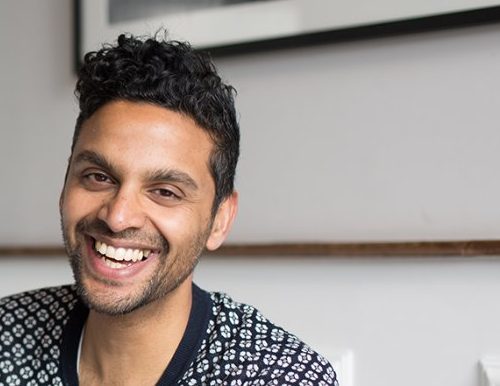Ahead of a Dundee talk for Book Week Scotland, best-selling author and app entrepreneur Rohan Gunatillake tells Michael Alexander why he believes there’s no need to switch off technology to bring calmness into life.
He is the best-selling author of books on mindfulness whose latest is about how to use your smartphone and technology to be calm and happy – an unusual concept in this age when we’re told to switch off tech to unwind!
But ahead of a Book Week Scotland event he is speaking at in Dundee on Saturday, Rohan Gunatillake insists there’s no reason why technology has to be abandoned to bring calmness to life.
“What if, in order to be mindful, calm and happy, we don’t have to stop and switch off from modern life?” says Rohan, whose book Modern Mindfulness offers practical techniques and principles to achieve just that.
“What if we can use our phones and technology in a practical way to help us be aware, composed and kind, wherever we are and whatever we are doing?”
Rohan, 37, who was raised in suburban London, is the creator of best-selling app buddhify, and is one of V&A Dundee’s Design Champions.
The Glasgow-based chemistry graduate, who worked in the fast paced technology sector after graduation, will discuss his book, his approach to mindfulness and answer questions when he speaks at the Book Week Scotland event aboard the HMS Unicorn.
“There’s been a real growth of interest into mindfulness and meditation in recent years,” he says.
“But despite all the interest there’s been, the majority of people who say they are interested in meditation don’t do anything about it, and the number one reason for that is ironically because they don’t have time, or it’s too hippy or they say ‘I have a switched on digital life and I can’t afford to turn it all off.’
Rohan summarises these scenarios as “the time problem, the hippy problem and the technology problem.”
However, as far as he is concerned the time problem is the key.
“When people think of meditation,” he adds, “they think of people with their eyes closed sitting down for half an hour doing formal meditation.
“What I encourage and evangelise is more ‘on the go’ or ‘mobile’ meditation where you can basically practice the same techniques wherever you are or whatever you are doing.
“The main emphasis of the talk will be explaining how we can practice meditation on the move.
“I’ll also be talking about how mindfulness and meditation came to be. Over the last 40 years it’s gone from being a religious spiritual niche experience to an emerging global wellbeing phenomenon.”
Rohan is also keen to paint an optimistic view of the ability of technology and mindfulness to co-exist in future – because technology isn’t going to go away.
He adds: “Everyone talks about digital detox and turning off your phones. If your one strategy in dealing with technology is to run it off, that’s rubbish. It’s up to us as individuals and as a culture I guess to become more literate in ways of engaging with technology that is actually good for us and starting to develop healthy behaviours.”
*Modern Mindfulness with Rohan Gunatillake, HMS Unicorn, Dundee, December 2
